
Home - Search - Browse - Alphabetic Index: 0- 1- 2- 3- 4- 5- 6- 7- 8- 9
A- B- C- D- E- F- G- H- I- J- K- L- M- N- O- P- Q- R- S- T- U- V- W- X- Y- Z
AS 2100
 AS 2100 satellite Credit: Lockheed-Martin |
AKA: A2100;A2100A;A2100AX;A2100AXS;A2100M;ACES;AEHF;CLIO;Garuda;MUOS;N-SAT-110;Rainbow;SBIRS;Vinasat;Zhongwei 1. Status: Operational 1996. First Launch: 1996-09-08. Last Launch: 2015-09-02. Number: 51 . Gross mass: 2,760 kg (6,080 lb).
Two large solar arrays. 18 operational C-Band channels with 45 W amplifiers.16 Ku-Band channels with 85 W amplifiers.4 Ku-Band channels at 135 watts.
More at: AS 2100.
| GE 1, 2, 3 / AMC 1, 2, 3 / Eagle 1 Null |
| EchoStar 3, 4, 7 Communication (Direct Broadcasting) satellite built by Lockheed Martin for Dish Network Corporation (EchoStar), USA. Launched 1997 - 2002. Used the A2100AX bus. |
| Zhongwei 1 (ChinaStar 1) / ZX 5A (ChinaSat 5A / APStar 9A Null |
| Nimiq 1, 2 Communication (Direct Broadcasting) satellite built by Lockheed Martin for Telesat Canada, Canada. Launched 1999 - 2002. Used the A2100AX bus. |
| Telkom 1 Communication satellite built by Lockheed Martin for PT Telekomunikasi Indonesia (PT Telkom), Indonesia. Launched 1999. Used the A2100A bus. |
| Koreasat 3 (Mugungwha 3) / ABS 7 Null |
| LMI Russian communications satellite. Lockheed Martin Intersputnik's LMI-1 satellite was a joint Russian-American venture. LMI-1 provided communications services to Eastern Europe and Central Asia. Communication satellite built by Lockheed Martin for Lockheed Martin Intersputnik (LMI) > Asia Broadcast Satellite (ABS), Russia. Launched 1999. Used the A2100AX bus. |
| GE 4, 6 / AMC 4, 6 / Rainbow 2 Null |
| Garuda 1, 2 (ACeS 1, 2) Null |
| GE 7, 8 / AMC 7, 8, 10, 11, 18 (Aurora 3) Null |
| GE 1A / AAP 1 / Worldsat 1 / NSS 11 Null |
| N-SAT 110 (JCSat 110, JCSat 7, Superbird 5 D) Null |
| NSS 7 Communication satellite built by Lockheed Martin for New Skies, Netherlands. Launched 2002. Used the A2100AXS bus. |
| NSS 6 Communication satellite built by Lockheed Martin for New Skies, Netherlands. Launched 2002. Used the A2100AXS bus. |
| Rainbow 1 / EchoStar 12 Null |
| AMC 15, 16 Communication satellite built by Lockheed Martin for SES Americom, USA. Launched 2004. Used the A2100AXS bus. |
| EchoStar 10 Communication (Direct Broadcasting) satellite built by Lockheed Martin for Dish Network Corporation (EchoStar), USA. Launched 2006. Used the A2100AXS bus. |
| JCSat 9 (JCSAT 5A, N-Star d) Null |
| Astra 1KR Communication (Direct Broadcasting) satellite built by Lockheed Martin for SES Astra, Luxembourg. Launched 2006. Used the A2100AXS bus. |
| JCSat 10, 11, 12 (JCSat 3A, RA) Null |
| Astra 1L Communication (Direct Broadcasting) satellite built by Lockheed Martin for SES Astra, Luxembourg. Launched 2007. Used the A2100AXS bus. |
| BSat 3a, 3b Communication satellite built by Lockheed Martin for Broadcasting Satellite System Corporation (B-SAT), Japan. Launched 2007 - 2010. Used the A2100A bus. |
| Sirius 4 (Astra 4A) Null |
| AMC 14 Communication satellite built by Lockheed Martin for SES Americom, USA. Launched 2008. Used the A2100AXS bus. |
| VINASAT 1 Communication satellite built by Lockheed Martin for Vietnam Posts and Telecommunications Group (VNPT) of Vietnam, Vietnam. Launched 2008. Used the A2100A bus. |
| Nemesis 1, 2 (PAN, CLIO / P360) Null |
| AEHF The Advanced Extremely High Frequency (AEHF) satellite program was the next generation of global, highly secure, survivable communications system for all services of the US Department of Defense, replacing the Milstar series. The first was finally launched three years behind schedule at a cost that had doubled from the original $5 billion estimate. The satellite was based on the commercial AS 2100 satellite bus (see for launch record). Comsat satellite built by Lockheed Martin (Bus), Northrop Grumman (ex TRW) (Payload) for USAF, USA. Launched 2010 - 2013. Used the A2100M bus. |
| SBIRS-GEO 1, 2, 3, 4 Early Warning satellite built by Lockheed Martin for USAF, USA. Launched 2011 - 2017. Used the A2100M bus. |
| BSat 3c / JCSAT 110R Null |
| MUOS 1, 2, 3, 4, 5 Comsat satellite built by Lockheed Martin (Prime), Boeing, General Dynamics for US Navy, USA. Launched 2012 - 2016. Used the A2100M bus. |
| JCSat 13 (JCSat 4B) Null |
| VINASAT 2 Communication satellite built by Lockheed Martin for Vietnam Posts and Telecommunications Group (VNPT) of Vietnam, Vietnam. Launched 2012. Used the A2100A bus. |
| GOES R, S, T, U Meteorology satellite built by Lockheed Martin for NOAA, USA. Launched 2016. Used the A2100A bus. |
| Agrani 1 Communicationsatellite built by Lockheed Martin for Afro-Asian Satellite Communications (Agrani). Used the A2100AXX bus. |
| Arabsat 6A Communication satellite built by Lockheed Martin for Arabsat. Used the A2100 (modernized) bus. |
| Astrolink 1, 2, 3, 4 Communication satellite built by Lockheed Martin for Astrolink. Used the A2100AXX bus. |
| BT-4 Pressure-fed liquid propellant engine developoed by IHI Aerospace of Japan. Originally developed for the cancelled LUNAR-A, later adopted internationally for use as the apogee engine for geostationary communications satellites (A2100 and GEOStar-2 buses), and the HTV and Cygnus automated cargo spacecraft. The thruster was built on the technology base from license build of the second stage attitude control system for the N-1 rocket in the 1970's, followed by the first indigenous-design Japanese thrusters for the ETS-4 (Kiku-3) satellite in the 1980's. |
| GPS-3 (Navstar-3) Null |
| HellasSat 4/SaudiGeoSat 1 Null |
| Jabiru 1 (MEASAT 3c) Null |
| JCSat 17 Communication satellite built by Lockheed Martin for SKY Perfect JSAT Corporation, Japan. Used the A2100 (modernized) bus. |
| LEROS-1 First of a family of liquid propellant rocket engines manufactured by Moog-ISP at Westcott, Buckinghamshire, United Kingdom. LEROS engines have been used as primary apogee engines for telecommunications satellites such as the Lockheed Martin A2100 as well as deep space missions such as Juno. The LEROS 1 was developed and qualified in the 1990s by Royal Ordnance, later part of British Aerospace. The LEROS engines are made of niobium alloy, which is traditionally used for liquid rocket engines such as the main engine of the Apollo Lunar Module. More than 70 LEROS 1 series engines have been delivered and have flown successfully as of 2015. |
| Rainbow Ka-1, 2, 3, 4, 5 Communication (Direct Broadcasting) satellite built by Lockheed Martin Commercial Space Systems for Cablevision (Rainbow Media). Used the A2100AXS bus. |
| SBIRS-GEO 5, 6 Early Warning satellite built by Lockheed Martin for USAF. Used the A2100M (modernized) bus. |
Family: Communications, Geosynchronous orbit, Surveillance. Country: USA. Launch Vehicles: Atlas, Proton, Ariane, Ariane 44LP, Ariane 44L, Ariane 42P, Atlas IIA, Ariane 42L, Atlas IIAS, Proton-K/DM-2M, Chang Zheng 3B, Ariane 5, Ariane 5G, Zenit-3SL, Atlas V, Proton-M/Briz-M, Atlas V 401, Ariane 5ECA, Atlas 3B, Atlas V 521, Atlas V 551, Atlas V 411, Atlas V 501, Atlas V 531. Projects: Americom, Anik, Astra, Chinastar, Intelsat, Palapa, Sirius. Launch Sites: Cape Canaveral, Baikonur, Cape Canaveral LC36A, Baikonur LC81/23, Cape Canaveral LC36B, Cape Canaveral LC41, Baikonur LC81/24, Kourou, Baikonur LC200/39, Xichang, Kourou ELA2, Xichang LC2, Kourou ELA3, Kiritimati. Agency: Astro Space, Echostar. Bibliography: 2, 278, 4, 552, 554, 12065, 12066, 12067, 12068, 12069, 12070, 12071, 12072, 12073, 12074, 12075, 12076, 12077, 12078, 12079, 12080, 12081, 12082, 12083, 12084, 12085, 12086, 12087, 12088, 12089, 12090, 12091, 12092.
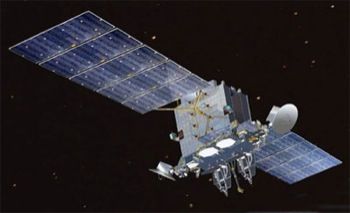 | USA 235 Credit: Manufacturer Image |
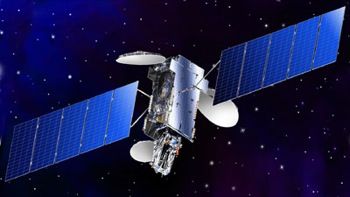 | AMC-14 Credit: Manufacturer Image |
 | AMC-16 (GE-16) Credit: Manufacturer Image |
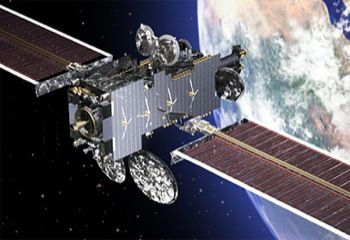 | Arabsat 6A Credit: Manufacturer Image |
 | Astrolink 1 Credit: Manufacturer Image |
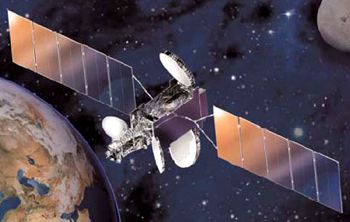 | Astra 1KR Credit: Manufacturer Image |
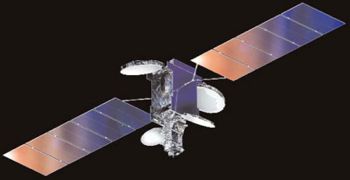 | Astra 1L Credit: Manufacturer Image |
 | AS 2100 satellite Credit: Lockheed-Martin |
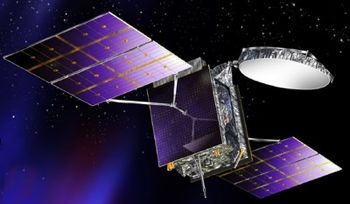 | BSAT-3A Credit: Manufacturer Image |
 | BSAT-3C Credit: Manufacturer Image |
 | Echostar 10 Credit: Manufacturer Image |
 | Agrani 1 Credit: Manufacturer Image |
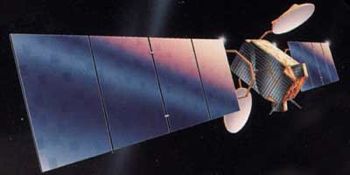 | GE 1 Credit: Manufacturer Image |
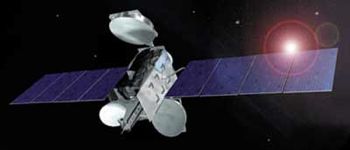 | GE 4 Credit: Manufacturer Image |
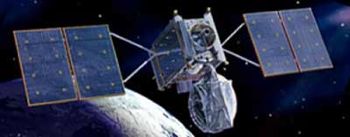 | GE 7 Credit: Manufacturer Image |
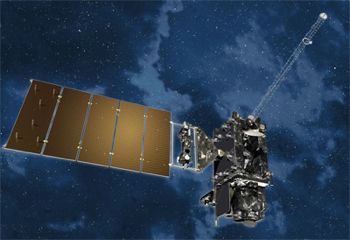 | GOES R Credit: Manufacturer Image |
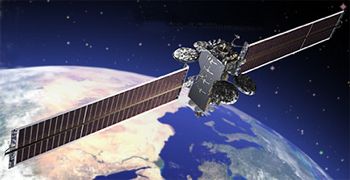 | HellasSat 4/SaudiGeo Credit: Manufacturer Image |
 | Jabiru 1 Credit: Manufacturer Image |
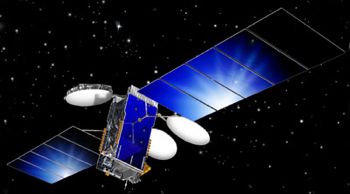 | JCSAT 10 Credit: Manufacturer Image |
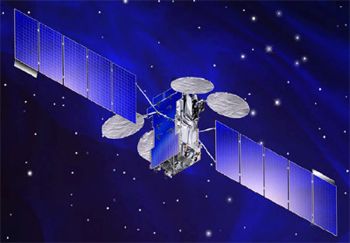 | JCSAT 13 Credit: Manufacturer Image |
 | JCSAT 9 Credit: Manufacturer Image |
 | Koreasat 3 / Mugungh Credit: Manufacturer Image |
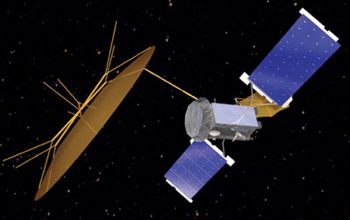 | MUOS 1 Credit: Manufacturer Image |
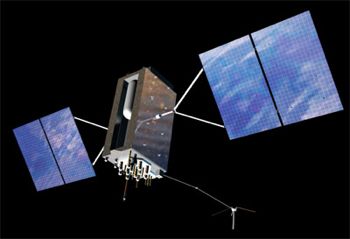 | Navstar 3 Credit: Manufacturer Image |
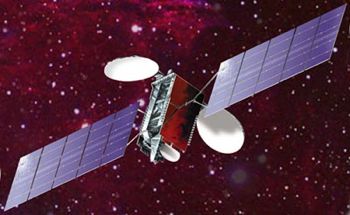 | Nimiq 1 Credit: Manufacturer Image |
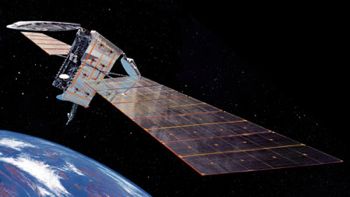 | N-SAT-110 Credit: Manufacturer Image |
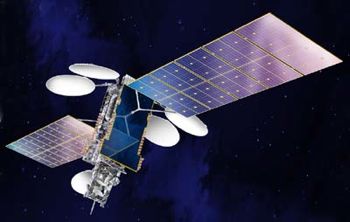 | NSS 6 Credit: Manufacturer Image |
 | NSS 7 Credit: Manufacturer Image |
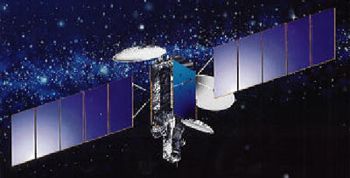 | Rainbow 1 (Cablevisi Credit: Manufacturer Image |
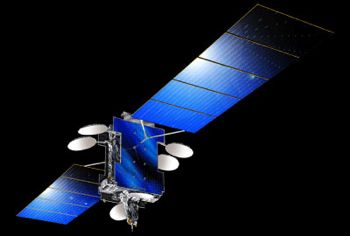 | Rainbow Ka-1 Credit: Manufacturer Image |
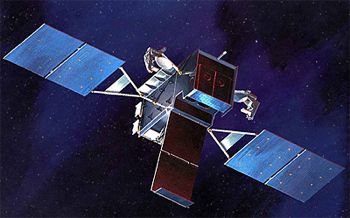 | USA 241 Credit: Manufacturer Image |
 | Sirius 4 Credit: Manufacturer Image |
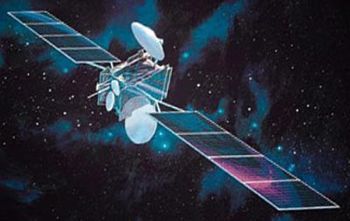 | Telkom 1 Credit: Manufacturer Image |
 | Vinasat 1 Credit: Manufacturer Image |
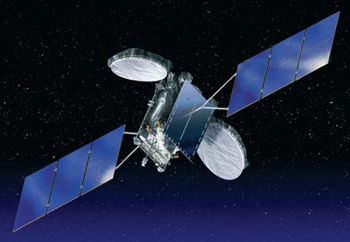 | Vinasat 2 Credit: Manufacturer Image |
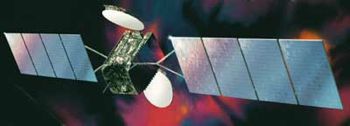 | Zhongwei 1 Credit: Manufacturer Image |
1996 September 8 - . 21:49 GMT - . Launch Site: Cape Canaveral. Launch Complex: Cape Canaveral LC36B. LV Family: Atlas. Launch Vehicle: Atlas IIA.
- GE 1 - .
Payload: A2100A. Mass: 2,783 kg (6,135 lb). Nation: USA.
Agency: GE Americom.
Manufacturer: Lockheed.
Program: Americom.
Class: Communications.
Type: Civilian communications satellite. Spacecraft: AS 2100.
USAF Sat Cat: 24315 . COSPAR: 1996-054A. Apogee: 35,793 km (22,240 mi). Perigee: 35,780 km (22,230 mi). Inclination: 0.00 deg. Period: 1,436.10 min.
Geostationary at 103.0W. Launch vehicle put payload into supersynchronous earth orbit with IFR/MRS trajectory option. Positioned in geosynchronous orbit at 103 deg W in 1996-1999 As of 4 September 2001 located at 103.06 deg W drifting at 0.009 deg W per day. As of 2007 Mar 11 located at 103.03W drifting at 0.006W degrees per day.
1997 January 30 - . 22:04 GMT - . Launch Site: Kourou. Launch Complex: Kourou ELA2. LV Family: Ariane. Launch Vehicle: Ariane 44L.
- GE 2 - . Payload: A2100A. Mass: 2,648 kg (5,837 lb). Nation: USA. Agency: GE Americom. Manufacturer: RCA. Program: Americom. Class: Communications. Type: Civilian communications satellite. Spacecraft: AS 2100. USAF Sat Cat: 24713 . COSPAR: 1997-002A. Apogee: 35,801 km (22,245 mi). Perigee: 35,772 km (22,227 mi). Inclination: 0.00 deg. Period: 1,436.10 min. Geosynchronous. Stationed over 84.9W Positioned in geosynchronous orbit at 85 deg W in 1997-1999 As of 5 September 2001 located at 84.89 deg W drifting at 0.007 deg W per day. As of 2007 Mar 9 located at 85.05W drifting at 0.004W degrees per day..
1997 September 4 - . 12:03 GMT - . Launch Site: Cape Canaveral. Launch Complex: Cape Canaveral LC36A. LV Family: Atlas. Launch Vehicle: Atlas IIAS.
- GE 3 - .
Payload: A2100A. Mass: 2,845 kg (6,272 lb). Nation: USA.
Agency: GE Americom.
Manufacturer: RCA.
Program: Americom.
Class: Communications.
Type: Civilian communications satellite. Spacecraft: AS 2100.
USAF Sat Cat: 24936 . COSPAR: 1997-050A. Apogee: 35,795 km (22,241 mi). Perigee: 35,779 km (22,231 mi). Inclination: 0.00 deg. Period: 1,436.10 min.
Geosynchronous. Stationed over 87.1W Launch vehicle put payload into supersynchronous earth orbit with IFR/MRS trajectory option. Positioned in geosynchronous orbit at 87 deg W in 1997-1999 As of 3 September 2001 located at 87.12 deg W drifting at 0.002 deg W per day. As of 2007 Mar 11 located at 86.99W drifting at 0.010W degrees per day.
1997 October 5 - . 21:01 GMT - . Launch Site: Cape Canaveral. Launch Complex: Cape Canaveral LC36B. LV Family: Atlas. Launch Vehicle: Atlas IIAS.
- Echostar 3 - .
Mass: 3,415 kg (7,528 lb). Nation: USA.
Agency: PanAmSat.
Manufacturer: Lockheed.
Program: Echostar.
Class: Communications.
Type: Civilian communications satellite. Spacecraft: AS 2100.
USAF Sat Cat: 25004 . COSPAR: 1997-059A. Apogee: 35,794 km (22,241 mi). Perigee: 35,777 km (22,230 mi). Inclination: 0.00 deg. Period: 1,436.10 min.
Geosynchronous. Stationed over 61.4W Launch vehicle put payload into supersynchronous earth orbit with IFR/MRS trajectory option. Positioned in geosynchronous orbit at 61 deg W in 1997-1999 As of 5 September 2001 located at 61.53 deg W drifting at 0.017 deg W per day. As of 2007 Mar 11 located at 61.50W drifting at 0.007W degrees per day.
1998 May 7 - . 23:45 GMT - . Launch Site: Baikonur. Launch Complex: Baikonur LC81/23. LV Family: Proton. Launch Vehicle: Proton-K/DM-2M.
- Echostar 4 - .
Payload: A2100AX. Mass: 3,478 kg (7,667 lb). Nation: USA.
Agency: PanAmSat.
Manufacturer: Lockheed.
Program: Echostar.
Class: Communications.
Type: Civilian communications satellite. Spacecraft: AS 2100.
USAF Sat Cat: 25331 . COSPAR: 1998-028A. Apogee: 35,789 km (22,238 mi). Perigee: 35,784 km (22,235 mi). Inclination: 0.10 deg. Period: 1,436.10 min.
Geostationary at 148.0 degrees W. Positioned in geosynchronous orbit at 128 deg W in 1998; 148 deg W in 1998-1999; 110 deg W in 1999; 119 deg W in 2000. As of 5 September 2001 located at 118.91 deg W drifting at 0.001 deg W per day. As of 2007 Mar 10 located at 77.02W drifting at 0.001W degrees per day.
1998 May 30 - . 10:00 GMT - . Launch Site: Xichang. Launch Complex: Xichang LC2. LV Family: CZ. Launch Vehicle: Chang Zheng 3B.
- Zhongwei 1 - .
Payload: A2100A. Mass: 2,984 kg (6,578 lb). Nation: China.
Agency: Chinasat.
Manufacturer: Lockheed.
Program: Chinastar.
Class: Communications.
Type: Civilian communications satellite. Spacecraft: AS 2100.
USAF Sat Cat: 25354 . COSPAR: 1998-033A. Apogee: 35,798 km (22,243 mi). Perigee: 35,777 km (22,230 mi). Inclination: 0.10 deg. Period: 1,436.10 min.
Also known as Chinastar 1; comsat to serve China, India, Korea and Southeast Asia with 18 C-band and 20 Ku-band transponders. Operated by the China Orient Telecommunications Satellite Company, part of the Chinese telecommunications ministry. Zhongwei 1 and the CZ-3B's final liquid hydrogen upper stage were placed in an initial supersynchronous 216 x 85,035 km x 24.4 deg transfer orbit. Geostationary at 87.6 degrees E. Positioned in geosynchronous orbit at 87 deg E in 1998-1999 As of 6 September 2001 located at 87.49 deg E drifting at 0.013 deg W per day. As of 2007 Mar 11 located at 87.64E drifting at 0.010W degrees per day.
1999 May 20 - . 22:30 GMT - . Launch Site: Baikonur. Launch Complex: Baikonur LC81/23. LV Family: Proton. Launch Vehicle: Proton-K/DM-2M.
- Nimiq 1 - .
Payload: A2100AX. Mass: 3,600 kg (7,900 lb). Nation: Canada.
Agency: Telesat.
Manufacturer: Lockheed.
Program: Anik.
Class: Communications.
Type: Civilian communications satellite. Spacecraft: AS 2100.
USAF Sat Cat: 25740 . COSPAR: 1999-027A. Apogee: 35,801 km (22,245 mi). Perigee: 35,772 km (22,227 mi). Inclination: 0.00 deg. Period: 1,436.10 min.
Telesat Canada's Nimiq television broadcasting satellite was placed into a 7050 km x 35790 km x 15.9 degree transfer orbit. The Nimiq was to use its liquid apogee engine (Royal Ordnance Leros 1) to reach geosynchronous orbit. Telesat Canada also operated the Anik Canadian domestic communications satellites, the first of which was launched in 1972. Positioned in geosynchronous orbit at 91 deg W in 1999. As of 4 September 2001 located at 91.11 deg W drifting at 0.002 deg W per day. As of 2007 Mar 9 located at 91.18W drifting at 0.012W degrees per day.
1999 August 12 - . 22:52 GMT - . Launch Site: Kourou. Launch Complex: Kourou ELA2. LV Family: Ariane. Launch Vehicle: Ariane 42P.
- Telkom 1 - .
Payload: A2100A. Mass: 2,763 kg (6,091 lb). Nation: Indonesia.
Agency: PT Telkom.
Manufacturer: Lockheed.
Program: Palapa.
Class: Communications.
Type: Civilian communications satellite. Spacecraft: AS 2100.
USAF Sat Cat: 25880 . COSPAR: 1999-042A. Apogee: 35,796 km (22,242 mi). Perigee: 35,779 km (22,231 mi). Inclination: 0.00 deg. Period: 1,436.10 min.
The launch vehicle delivered its H-10-3 third stage and the Telkom 1 payload into a 221 km x 35687 km x 7.0 degree geosynchronous transfer orbit 21 minutes after launch. Telkom 1 was owned by PT Telkomunikasi of Indonesia and was a successor to the Palapa series of satellites. Mass of Telkom 1 was 1700 kg in geosynchronous orbit after its on-board engine made the apogee burn. Stationed at 108 deg E. Positioned in geosynchronous orbit at 108 deg E in 1999. As of 3 September 2001 located at 107.98 deg E drifting at 0.011 deg W per day. As of 2007 Mar 11 located at 107.98E drifting at 0.014W degrees per day.
1999 September 4 - . 22:34 GMT - . Launch Site: Kourou. Launch Complex: Kourou ELA2. LV Family: Ariane. Launch Vehicle: Ariane 42P.
- Koreasat 3 / Mugunghwa 3 - .
Payload: A2100A. Mass: 2,790 kg (6,150 lb). Nation: Korea South.
Agency: KT.
Manufacturer: Lockheed.
Program: Koreasat.
Class: Communications.
Type: Civilian communications satellite. Spacecraft: AS 2100.
USAF Sat Cat: 25894 . COSPAR: 1999-046A. Apogee: 35,792 km (22,240 mi). Perigee: 35,782 km (22,233 mi). Inclination: 0.00 deg. Period: 1,436.10 min.
Geosynchronous communications satellite. Stationed at 112 deg E. Positioned in geosynchronous orbit at 112 deg E in 1999. As of 31 August 2001 located at 115.99 deg E drifting at 0.014 deg W per day. As of 2007 Mar 10 located at 116.12E drifting at 0.008W degrees per day.
1999 September 26 - . 22:30 GMT - . Launch Site: Baikonur. Launch Complex: Baikonur LC81/23. LV Family: Proton. Launch Vehicle: Proton-K/DM-2M.
- LMI-1 - .
Nation: Russia.
Agency: Lockheed.
Manufacturer: Lockheed.
Class: Communications.
Type: Civilian communications satellite. Spacecraft Bus: AS 2100.
Spacecraft: LMI.
USAF Sat Cat: 25924 . COSPAR: 1999-053A. Apogee: 35,796 km (22,242 mi). Perigee: 35,777 km (22,230 mi). Inclination: 0.00 deg. Period: 1,436.10 min.
Geosynchronous communications satellite. Stationed at 75 deg E. Positioned in geosynchronous orbit at 75 deg E in 1999. As of 2 September 2001 located at 74.98 deg E drifting at 0.005 deg W per day. As of 2007 Mar 10 located at 75.00E drifting at 0.004W degrees per day.
1999 November 13 - . 22:54 GMT - . Launch Site: Kourou. Launch Complex: Kourou ELA2. LV Family: Ariane. Launch Vehicle: Ariane 44LP.
- GE 4 - .
Payload: A2100AX. Mass: 3,895 kg (8,587 lb). Nation: USA.
Agency: GE Americom.
Manufacturer: Lockheed.
Program: Americom.
Class: Communications.
Type: Civilian communications satellite. Spacecraft: AS 2100.
USAF Sat Cat: 25954 . COSPAR: 1999-060A. Apogee: 35,793 km (22,240 mi). Perigee: 35,780 km (22,230 mi). Inclination: 0.00 deg. Period: 1,436.10 min.
Provided C and Ku-band communications services for GE Americom, replacing Spacenet 4. Stationed at 101 deg W. Positioned in geosynchronous orbit at 74 deg W in 1999. As of 5 September 2001 located at 101.12 deg W drifting at 0.008 deg W per day. As of 2007 Mar 11 located at 101.02W drifting at 0.004W degrees per day.
2000 February 12 - . 09:10 GMT - . Launch Site: Baikonur. Launch Complex: Baikonur LC81/23. LV Family: Proton. Launch Vehicle: Proton-K/DM-2M.
- Garuda 1 - .
Payload: ACES / A2100AXX. Mass: 4,500 kg (9,900 lb). Nation: Indonesia.
Agency: ACES.
Manufacturer: Lockheed.
Class: Communications.
Type: Civilian communications satellite. Spacecraft: AS 2100.
USAF Sat Cat: 26089 . COSPAR: 2000-011A. Apogee: 35,799 km (22,244 mi). Perigee: 35,774 km (22,228 mi). Inclination: 1.00 deg. Period: 1,436.10 min.
Geosynchronous communications satellite for the ACES consortium (PSN of Indonesia, PLDT of the Phillipines, Lockheed Martin, and Jasmine of Thailand). The satellite had two large 12-m diameter L-band antennae for cellular telephone relay. Stationed at 123 deg E. Positioned in geosynchronous orbit at 123 deg E in 2000. As of 5 September 2001 located at 122.97 deg E drifting at 0.023 deg W per day. As of 2007 Mar 10 located at 123.10E drifting at 0.005W degrees per day.
2000 September 14 - . 22:54 GMT - . Launch Site: Kourou. Launch Complex: Kourou ELA3. LV Family: Ariane 5. Launch Vehicle: Ariane 5G.
- GE 7 - .
Payload: A2100A. Mass: 3,320 kg (7,310 lb). Nation: USA.
Agency: GE Americom.
Manufacturer: Lockheed.
Program: Americom.
Class: Communications.
Type: Civilian communications satellite. Spacecraft: AS 2100.
USAF Sat Cat: 26495 . COSPAR: 2000-054B. Apogee: 35,797 km (22,243 mi). Perigee: 35,775 km (22,229 mi). Inclination: 0.10 deg. Period: 1,436.10 min.
Direct Broadcasting satellite. GE Americom satellite to provide cable TV distribution coverage to the USA. Equipped with 24 C-band transponders. Its dry mass was 912 kg and it carried 1023 kg of fuel at launch. The satellite is an A2100A model built by Lockheed Martin/Lockheed, the first lightweight A2100 with a mass about half that of earlier A2100 satellites. By September 19 GE 7 was in a 35,832 x 35,869 km x 0.1 deg orbit drifting over 146 deg W. Stationed at 137 deg W. Positioned in geosynchronous orbit at 137 deg W in 2000. As of 4 September 2001 located at 136.92 deg W drifting at 0.003 deg E per day. As of 2007 Mar 9 located at 137.03W drifting at 0.000E degrees per day.
2000 October 1 - . 22:00 GMT - . Launch Site: Baikonur. Launch Complex: Baikonur LC81/23. LV Family: Proton. Launch Vehicle: Proton-K/DM-2M.
- GE-1A - .
Payload: A2100AX. Mass: 3,593 kg (7,921 lb). Nation: USA.
Agency: GE Americom.
Manufacturer: Lockheed.
Program: Americom.
Class: Communications.
Type: Civilian communications satellite. Spacecraft: AS 2100.
USAF Sat Cat: 26554 . COSPAR: 2000-059A. Apogee: 35,792 km (22,240 mi). Perigee: 35,782 km (22,233 mi). Inclination: 0.10 deg. Period: 1,436.10 min.
Ku-band communications satellite to provide broadcast services for eastern Asia. Stationed at 108 deg E. Positioned in geosynchronous orbit at 108 deg E in 2000. As of 4 September 2001 located at 108.22 deg E drifting at 0.009 deg W per day. As of 2007 Mar 10 located at 108.21E drifting at 0.011W degrees per day.
2000 October 6 - . 23:00 GMT - . Launch Site: Kourou. Launch Complex: Kourou ELA2. LV Family: Ariane. Launch Vehicle: Ariane 42L.
- Superbird 5 - .
Payload: A2100AX / N-SAT-110. Mass: 3,531 kg (7,784 lb). Nation: Japan.
Agency: SCC.
Manufacturer: Lockheed.
Class: Communications.
Type: Civilian communications satellite. Spacecraft: AS 2100.
USAF Sat Cat: 26559 . COSPAR: 2000-060A. Apogee: 35,792 km (22,240 mi). Perigee: 35,782 km (22,233 mi). Inclination: 0.00 deg. Period: 1,436.10 min.
N-SAT-110, also known as Superbird 5, was jointly owned by SCC (Space Communications Corporation of Tokyo) and JSat (Japan Satellite Systems). SCC controlled the vehicle on orbit. The satellite carried 24 Ku-band transponders. By October 15 N-SAT-110 was in a 35610 x 35752 km x 0.1 deg orbit drifting past 109 deg E. Stationed at 110 deg E. Positioned in geosynchronous orbit at 110 deg E in 2000. As of 4 September 2001 located at 110.06 deg E drifting at 0.012 deg W per day. As of 2007 Mar 11 located at 110.07E drifting at 0.007W degrees per day.
2000 October 21 - . Launch Site: Baikonur. Launch Complex: Baikonur LC81/23. LV Family: Proton. Launch Vehicle: Proton-K/DM-2M.
- GE 6 - .
Payload: A2100AX. Mass: 3,909 kg (8,617 lb). Nation: USA.
Agency: GE Americom.
Manufacturer: Lockheed.
Program: Americom.
Class: Communications.
Type: Civilian communications satellite. Spacecraft: AS 2100.
USAF Sat Cat: 26580 . COSPAR: 2000-067A. Apogee: 35,795 km (22,241 mi). Perigee: 35,778 km (22,231 mi). Inclination: 0.00 deg. Period: 1,436.10 min.
Communications satellite. Stationed at 72 deg W. The GE 6 was a Lockheed Martin A2100 series satellite with a mass of 3552 kg at launch and 1900 kg dry. It was to provide broadcast and data services in North America. The DM3 upper stage made two burns and placed the GE 6 in a 5850 x 35726 km x 18.7 deg intermediate transfer orbit at 0441 UTC on October 22. Positioned in geosynchronous orbit at 72 deg W in 2000. As of 3 September 2001 located at 72.01 deg W drifting at 0.008 deg W per day. As of 2007 Mar 11 located at 72.00W drifting at 0.005W degrees per day.
2000 December 20 - . Launch Site: Kourou. Launch Complex: Kourou ELA3. LV Family: Ariane 5. Launch Vehicle: Ariane 5G.
- GE 8 / Aurora 3 - .
Payload: A2100A. Mass: 2,015 kg (4,442 lb). Nation: USA.
Agency: GE Americom.
Manufacturer: Lockheed.
Program: Americom.
Class: Communications.
Type: Civilian communications satellite. Spacecraft: AS 2100.
USAF Sat Cat: 26639 . COSPAR: 2000-081B. Apogee: 35,795 km (22,241 mi). Perigee: 35,784 km (22,235 mi). Inclination: 0.00 deg. Period: 1,436.25 min.
GE 8 was a C-band TV and data distribution satellite for GE Americom. The Lockheed Martin A2100A spacecraft had a launch mass of 2015 kg, a dry mass of 919 kg, and was equipped with 24 C-band transponders. By December 26 GE 8 had reached an 18656 x 35760 km x 0.4 deg orbit on its way to geostationary orbit. It was jointly owned by AT&T Alascom for Alaskan communications, and was also called Aurora III. Americom and Alascom were originally both RCA subsidiaries. Alascom continued to use the Americom network while GE operated the satellite. The 2.2 tonne (with fuel) spacecraft carried 24 C-band transponders to provide voice, video, and broadband data communications to the contiguous USA, Alaska, and the Caribbean after parking over 139 deg-W longitude. Positioned in geosynchronous orbit at 146 deg W in 2001 As of 5 September 2001 located at 139.01 deg W drifting at 0.000 deg W per day. As of 2007 Mar 11 located at 139.03W drifting at 0.003E degrees per day.
2002 February 21 - . 12:43 GMT - . Launch Site: Cape Canaveral. Launch Complex: Cape Canaveral LC36B. Launch Pad: SLC36B. LV Family: Atlas. Launch Vehicle: Atlas 3B.
- Echostar 7 - .
Payload: A2100AX. Mass: 690 kg (1,520 lb). Nation: USA.
Agency: PanAmSat.
Manufacturer: Lockheed,
Motorola.
Program: Echostar.
Class: Communications.
Type: Civilian communications satellite. Spacecraft: AS 2100.
USAF Sat Cat: 27378 . COSPAR: 2002-006A. Apogee: 35,794 km (22,241 mi). Perigee: 35,779 km (22,231 mi). Inclination: 0.10 deg. Period: 1,436.10 min.
Direct Broasdcasting satellite. The first launch of the Atlas 3B, with the Common Centaur stretched two-engine upper stage. Launch delayed from December 19, 2001 and January 22. The Echostar 7 communications satellite was placed into geostationary transfer orbit. The first burn of the Centaur put the stack into a 185 x 193 km x 28.1 deg parking orbit. At 1305 UTC the Centaur burned again to achieve the final 245 x 57060 km x 22.6 deg transfer orbit and separated from Echostar. As of 2007 Mar 11 located at 118.92W drifting at 0.006W degrees per day.
2002 April 16 - . 23:02 GMT - . Launch Site: Kourou. Launch Complex: Kourou ELA2. LV Family: Ariane. Launch Vehicle: Ariane 44L.
- NSS 7 - .
Payload: A2100AXS. Mass: 4,692 kg (10,344 lb). Nation: Netherlands.
Agency: New Skies.
Manufacturer: Lockheed.
Program: Intelsat.
Class: Communications.
Type: Civilian communications satellite. Spacecraft: AS 2100.
USAF Sat Cat: 27414 . COSPAR: 2002-019A. Apogee: 35,791 km (22,239 mi). Perigee: 35,782 km (22,233 mi). Inclination: 0.00 deg. Period: 1,436.10 min.
Ariane mission V150 placed Lockheed Martin A2100-class satellite NSS 7 satellite into orbit. The satellite was owned by New Skies, an Intelsat spinoff, and carried a C/Ku band telecoms payload. The spacecraft was in a 24200 x 35706 km x 0.7 deg orbit by April 24, on its way to geosynchrnous orbit. As of 2007 Mar 9 located at 22.01W drifting at 0.010W degrees per day.
2002 December 17 - . 23:04 GMT - . Launch Site: Kourou. Launch Complex: Kourou ELA2. LV Family: Ariane. Launch Vehicle: Ariane 44L.
- NSS 6 - .
Payload: A2100AXS. Mass: 4,575 kg (10,086 lb). Nation: Netherlands.
Agency: New Skies.
Manufacturer: Lockheed.
Program: Intelsat.
Class: Communications.
Type: Civilian communications satellite. Spacecraft: AS 2100.
USAF Sat Cat: 27603 . COSPAR: 2002-057A. Apogee: 35,796 km (22,242 mi). Perigee: 35,779 km (22,231 mi). Inclination: 0.10 deg. Period: 1,436.10 min.
Launch delayed from late November, then December 12. The Dutch New Skies Satellites' NSS-6 telecommunications spacecraft was developed by Lockheed Martin Commercial Space Systems. It was to be positioned at 95 deg E to provide broadcasting and business services coverage of the Pacific Rim, Australia, India, the Middle East and southern Africa. As of 2007 Mar 11 located at 95.01E drifting at 0.008W degrees per day.
2002 December 29 - . 23:17 GMT - . Launch Site: Baikonur. Launch Complex: Baikonur LC81/24. LV Family: Proton. Launch Vehicle: Proton-M/Briz-M.
- Nimiq 2 - . Payload: A2100AX. Mass: 3,600 kg (7,900 lb). Nation: Canada. Agency: Telesat. Manufacturer: Lockheed. Program: Anik. Class: Communications. Type: Civilian communications satellite. Spacecraft: AS 2100. USAF Sat Cat: 27632 . COSPAR: 2002-062A. Apogee: 35,796 km (22,242 mi). Perigee: 35,787 km (22,236 mi). Inclination: 0.10 deg. Period: 1,436.30 min. Payload moved from Atlas 5. Direct broadcast satellite. As of 2007 Mar 10 located at 82.05W drifting at 0.004W degrees per day..
2003 July 17 - . 23:45 GMT - . Launch Site: Cape Canaveral. Launch Complex: Cape Canaveral LC41. Launch Pad: SLC41. LV Family: Atlas V. Launch Vehicle: Atlas V 521.
- Rainbow 1 (Cablevision 1) - . Payload: A2100AX. Mass: 4,328 kg (9,541 lb). Nation: USA. Agency: Cablevision. Manufacturer: Lockheed. Class: Communications. Type: Civilian communications satellite. Spacecraft: AS 2100. USAF Sat Cat: 27852 . COSPAR: 2003-033A. Apogee: 35,795 km (22,241 mi). Perigee: 35,779 km (22,231 mi). Inclination: 0.10 deg. Period: 1,436.10 min. Delayed from May 8 As of 2007 Mar 10 located at 61.68W drifting at 0.011W degrees per day..
2004 February 5 - . 23:46 GMT - . Launch Site: Cape Canaveral. Launch Complex: Cape Canaveral LC36A. Launch Pad: SLC36A. LV Family: Atlas. Launch Vehicle: Atlas IIAS.
- AMC-10 (GE-10) - .
Payload: A2100A. Mass: 2,340 kg (5,150 lb). Nation: USA.
Agency: SES Americom.
Manufacturer: Lockheed.
Program: Americom.
Class: Communications.
Type: Civilian communications satellite. Spacecraft: AS 2100.
USAF Sat Cat: 28154 . COSPAR: 2004-003A. Apogee: 35,798 km (22,243 mi). Perigee: 35,775 km (22,229 mi). Inclination: 0.0100 deg. Period: 1,436.09 min.
Americom 10 (AMC-10) was a replacement satellite for Satcom C3. It was to be located at 135 deg W. The C-band satellite, to be accompanied by AMC-11 later in 2004, were designed to support SES Americom's cable network in the United States, Canada, the Caribbean, and Mexico. The satellite had a design life of 15 years and carried 24 x 36 MHz C-band transponders. As of 2007 Mar 10 located at 134.97W drifting at 0.005E degrees per day.
2004 May 19 - . 22:22 GMT - . Launch Site: Cape Canaveral. Launch Complex: Cape Canaveral LC36B. Launch Pad: SLC36B. LV Family: Atlas. Launch Vehicle: Atlas IIAS.
- AMC-11 (GE-11) - . Payload: A2100A. Mass: 2,316 kg (5,105 lb). Nation: USA. Agency: SES Americom. Manufacturer: Lockheed. Program: Americom. Class: Communications. Type: Civilian communications satellite. Spacecraft: AS 2100. USAF Sat Cat: 28252 . COSPAR: 2004-017A. Apogee: 35,792 km (22,240 mi). Perigee: 35,778 km (22,231 mi). Inclination: 0.00 deg. Period: 1,436.00 min. Delayed from May 17. As of 2007 Mar 11 located at 131.04W drifting at 0.000E degrees per day..
2004 October 14 - . 21:23 GMT - . Launch Site: Baikonur. Launch Complex: Baikonur LC200/39. LV Family: Proton. Launch Vehicle: Proton-M/Briz-M.
- AMC- 15 - .
Payload: A2100AXS. Mass: 4,021 kg (8,864 lb). Nation: USA.
Agency: SES Americom.
Manufacturer: Lockheed.
Program: Americom.
Class: Communications.
Type: Civilian communications satellite. Spacecraft: AS 2100.
USAF Sat Cat: 28446 . COSPAR: 2004-041A. Apogee: 35,790 km (22,230 mi). Perigee: 35,782 km (22,233 mi). Inclination: 0.00 deg. Period: 1,436.10 min.
Communications satellite for SES Americom, equipped with Ku-band and Ka-band transponders. The Briz-M upper stage made three burns, then released the satellite on October 15 at 03:58 GMT into a 7132 x 35780 km x 18.6 deg orbit. AMC-15's on-board engine would be used to maneuver the spacecraft into its final geostationary orbit. As of 2007 Mar 11 located at 105.02W drifting at 0.003W degrees per day.
2004 December 17 - . 12:07 GMT - . Launch Site: Cape Canaveral. Launch Complex: Cape Canaveral LC41. Launch Pad: SLC41. LV Family: Atlas V. Launch Vehicle: Atlas V 521.
- AMC-16 (GE-16) - .
Payload: A2100AXS. Mass: 4,200 kg (9,200 lb). Nation: USA.
Agency: SES Americom.
Manufacturer: Lockheed.
Program: Americom.
Class: Communications.
Type: Civilian communications satellite. Spacecraft: AS 2100.
USAF Sat Cat: 28472 . COSPAR: 2004-048A. Apogee: 35,791 km (22,239 mi). Perigee: 35,781 km (22,233 mi). Inclination: 0.10 deg. Period: 1,436.10 min.
AMC-16, like AMC-15, was a hybrid Ku/Ka-band satellite built by Lockheed Martin and based on the A2100 spacecraft platform. The spacecraft was to become operational in early 2005 from 85º West with a 15 year design life. The satellite carried 24 x 36 MHz/140 W Ku-band transponders and 12 x 125MHz/75 W spot beams. Coverage included the continental United States, Alaska, and Hawaii. Launch was delayed from December 6 and 16. As of 2007 Mar 9 located at 118.75W drifting at 0.002W degrees per day.
2006 February 15 - . 23:35 GMT - . Launch Site: Kiritimati. Launch Pad: 0.0 N x 154.0 W. Launch Platform: Odyssey. LV Family: Zenit. Launch Vehicle: Zenit-3SL.
- Echostar 10 - . Payload: A2100AXS. Mass: 4,333 kg (9,552 lb). Nation: USA. Agency: PanAmSat. Manufacturer: Lockheed. Program: Echostar. Class: Communications. Type: Civilian communications satellite. Spacecraft: AS 2100. USAF Sat Cat: 28935 . COSPAR: 2006-003A. Apogee: 35,794 km (22,241 mi). Perigee: 35,780 km (22,230 mi). Inclination: 0.00 deg. Period: 1,436.10 min. Ku-band communications payload; station in geosynchronous orbit at 110.17 deg W. As of 2007 Mar 11 located at 110.21W drifting at 0.004W degrees per day..
2006 April 12 - . 23:30 GMT - . Launch Site: Kiritimati. Launch Pad: 0.0 N x 154.0 W. Launch Platform: Odyssey. LV Family: Zenit. Launch Vehicle: Zenit-3SL.
- JCSAT 9 - . Payload: A2100AX. Mass: 4,401 kg (9,702 lb). Nation: Japan. Agency: JSAT. Manufacturer: Lockheed. Program: JCSAT. Class: Communications. Type: Civilian communications satellite. Spacecraft: AS 2100. USAF Sat Cat: 29045 . COSPAR: 2006-010A. Apogee: 35,790 km (22,230 mi). Perigee: 35,785 km (22,235 mi). Inclination: 0.00 deg. Period: 1,436.10 min. As of 2007 Mar 8 located at 132.01E drifting at 0.014W degrees per day..
2006 April 20 - . 20:27 GMT - . Launch Site: Cape Canaveral. Launch Complex: Cape Canaveral LC41. Launch Pad: SLC41. LV Family: Atlas V. Launch Vehicle: Atlas V 411.
- Astra 1KR - .
Payload: A2100AXS. Mass: 4,332 kg (9,550 lb). Nation: Luxembourg.
Agency: SES.
Manufacturer: Lockheed.
Program: Astra.
Class: Communications.
Type: Civilian communications satellite. Spacecraft: AS 2100.
USAF Sat Cat: 29055 . COSPAR: 2006-012A. Apogee: 35,696 km (22,180 mi). Perigee: 35,631 km (22,140 mi). Inclination: 0.10 deg. Period: 1,429.80 min.
The first Centaur upper stage burn placed the stack into a 167 km x 22442 km x 24.8 deg transfer orbit. After a second burn the Centaur released the satellite into a 6470 km x 36240 km x 23.8 deg orbit, from which it would use its own engine to achieve final geosynchronous orbit. As of 2007 Mar 10 located at 19.18E drifting at 0.022W degrees per day.
2006 August 11 - . 22:15 GMT - . Launch Site: Kourou. Launch Complex: Kourou ELA3. LV Family: Ariane 5. Launch Vehicle: Ariane 5ECA.
- JCSAT 10 - . Payload: A2100AXS. Mass: 4,048 kg (8,924 lb). Nation: Japan. Agency: JSAT. Manufacturer: Lockheed. Program: JCSAT. Class: Communications. Type: Civilian communications satellite. Spacecraft: AS 2100. USAF Sat Cat: 29272 . COSPAR: 2006-033A. Apogee: 35,793 km (22,240 mi). Perigee: 35,781 km (22,233 mi). Inclination: 0.00 deg. Period: 1,436.10 min. Ku/C-band television broadcasting satellite for the Japanese market; mass 1858 kg dry. As of 2007 Mar 11 located at 128.01E drifting at 0.012W degrees per day..
2006 December 8 - . 22:08 GMT - . Launch Site: Kourou. Launch Complex: Kourou ELA3. LV Family: Ariane 5. Launch Vehicle: Ariane 5ECA.
- AMC-18 - . Payload: A2100A. Mass: 2,081 kg (4,587 lb). Nation: USA. Agency: SES Americom. Manufacturer: Lockheed. Program: Americom. Class: Communications. Type: Civilian communications satellite. Spacecraft: AS 2100. USAF Sat Cat: 29644 . COSPAR: 2006-054B. Apogee: 35,789 km (22,238 mi). Perigee: 35,783 km (22,234 mi). Inclination: 0.0100 deg. Period: 1,436.09 min. C-band cable television distribution satellite with a dry mass of 918 kg. As of 2007 Mar 11 located at 104.94W drifting at 0.006W degrees per day..
2007 May 4 - . 22:29 GMT - . Launch Site: Kourou. Launch Complex: Kourou ELA3. LV Family: Ariane 5. Launch Vehicle: Ariane 5ECA.
- Astra 1L - .
Payload: A2100AXS. Mass: 4,497 kg (9,914 lb). Nation: Luxembourg.
Agency: SES.
Manufacturer: Lockheed.
Program: Astra.
Class: Communications.
Type: Civilian communications satellite. Spacecraft: AS 2100.
USAF Sat Cat: 31306 . COSPAR: 2007-016A. Apogee: 35,788 km (22,237 mi). Perigee: 35,784 km (22,235 mi). Inclination: 0.10 deg. Period: 1,436.00 min.
Astra 1L provided direct-to-home broadcast services to Europe from its location at 19.2º East. It also strengthened the SES in-orbit backup system, extended fleet coverage from the Canary Islands eastwards up to the Russian border, and allowed Astra 2C to be moved from 19.2º East to 28.2º to fulfill high capacity demand from the U.K. and Ireland. Astra 1L was equipped with 29 Ku + 2 Ka active transponders, which would be reduced to 27 active transponders after its first five years of operation.
2007 August 14 - . 23:44 GMT - . Launch Site: Kourou. Launch Complex: Kourou ELA3. LV Family: Ariane 5. Launch Vehicle: Ariane 5ECA.
- BSAT-3A - . Payload: A2100A. Mass: 1,967 kg (4,336 lb). Nation: Japan. Agency: BSAT. Manufacturer: Lockheed. Program: BSAT. Class: Communications. Type: Civilian communications satellite. Spacecraft: AS 2100. USAF Sat Cat: 32019 . COSPAR: 2007-036B. Apogee: 35,826 km (22,261 mi). Perigee: 35,746 km (22,211 mi). Inclination: 0.10 deg. Period: 1,436.00 min. Satllite launched for the Japan Broadcasting Satellite Systems Corp. (BSAT) with a Ku-band television payload. Mass 930 kg dry..
2007 September 5 - . 22:43 GMT - . Launch Site: Baikonur. Launch Complex: Baikonur LC200/39. LV Family: Proton. Launch Vehicle: Proton-M/Briz-M. FAILURE: Second stage engine failure soon after ignition.. Failed Stage: 2.
- JCSAT 11 - . Payload: A2100AXS. Mass: 4,007 kg (8,833 lb). Nation: USA. Agency: ILS. Manufacturer: Lockheed. Program: JCSAT. Class: Communications. Type: Civilian communications satellite. Spacecraft: AS 2100.
2007 November 17 - . 22:39 GMT - . Launch Site: Baikonur. Launch Complex: Baikonur LC200/39. LV Family: Proton. Launch Vehicle: Proton-M/Briz-M.
- Sirius 4 - .
Payload: A2100AX. Mass: 4,600 kg (10,100 lb). Nation: Sweden.
Agency: ILS.
Manufacturer: Lockheed.
Program: Sirius.
Class: Communications.
Type: Civilian communications satellite. Spacecraft: AS 2100.
USAF Sat Cat: 32299 . COSPAR: 2007-057A. Apogee: 35,780 km (22,230 mi). Perigee: 35,641 km (22,146 mi). Inclination: 0.00 deg. Period: 1,432.20 min.
Sirius 4 carried Ku-band and Ka-band communications payloads for Nordic, Baltic and East European communications. Three upper-stage burns placed Sirius 4 into a 6916 km x 35478 km x 17.4 deg geostationary transfer orbit. A series of maneuvers by the satellite using its own Leros engine maneuvered the satellite into geosynchronous orbit, stationed at 5 deg East.
2008 March 14 - . 23:18 GMT - . Launch Site: Baikonur. Launch Complex: Baikonur LC200/39. LV Family: Proton. Launch Vehicle: Proton-M/Briz-M. FAILURE: Premature shutdown of Briz upper stage due to escape of turbine gases through a thin-walled tube.. Failed Stage: U.
- AMC-14 - .
Payload: A2100AXS. Mass: 4,140 kg (9,120 lb). Nation: USA.
Agency: SES Americom.
Manufacturer: Lockheed.
Program: Americom.
Class: Communications.
Type: Civilian communications satellite. Spacecraft: AS 2100.
USAF Sat Cat: 32708 . COSPAR: 2008-011A. Apogee: 35,979 km (22,356 mi). Perigee: 35,592 km (22,115 mi). Inclination: 14.47 deg. Period: 1,436.03 min.
The Briz M stage failed during its second burn, shutting down by 2 minutes 13 seconds early, leaving the satellite in a 770 km x 26447 km x 49.2 deg orbit. The spacecraft separated and raised this to 772 km x 35576 km x 49.0 deg, but operational geostationary orbit could not be attained and the satellite was a writeoff. AMC 14 had a total mass at launch of 4140 kg of which 2130 kg was propellant. The final orbit attained was an inclined orbit at geostationary altitude.
2008 April 18 - . 22:17 GMT - . Launch Site: Kourou. Launch Complex: Kourou ELA3. LV Family: Ariane 5. Launch Vehicle: Ariane 5ECA.
- Vinasat 1 - . Payload: A2100A. Mass: 6,740 kg (14,850 lb). Nation: Vietnam. Agency: Arianespace. Class: Communications. Type: Civilian communications satellite. Spacecraft: AS 2100. USAF Sat Cat: 32767 . COSPAR: 2008-018A. Apogee: 35,789 km (22,238 mi). Perigee: 35,787 km (22,236 mi). Inclination: 0.00 deg. Period: 1,436.20 min. First satellite launched by Vietnam. The Vietnam Post and Telecom Corporation communications satellite was equipped with C and Ku band payloads..
2009 August 21 - . 22:09 GMT - . Launch Site: Kourou. Launch Complex: Kourou ELA3. LV Family: Ariane 5. Launch Vehicle: Ariane 5ECA.
- JCSAT 12 - . Payload: A2100AXS. Mass: 4,000 kg (8,800 lb). Nation: France. Agency: Arianespace. Program: JCSAT. Class: Communications. Type: Communications satellite. Spacecraft: AS 2100. USAF Sat Cat: 35755 . COSPAR: 2009-044A. Apogee: 35,795 km (22,241 mi). Perigee: 35,779 km (22,231 mi). Inclination: 0.00 deg. Period: 1,436.10 min.
2010 August 14 - . 11:07 GMT - . Launch Site: Cape Canaveral. Launch Complex: Cape Canaveral LC41. Launch Pad: SLC41. LV Family: Atlas V. Launch Vehicle: Atlas V 531.
- USA 214 - .
Payload: AEHF 1 / A2100M. Mass: 6,168 kg (13,598 lb). Nation: USA.
Agency: Martin.
Class: Communications.
Type: Military communications satellite. Spacecraft: AS 2100.
USAF Sat Cat: 36868 . COSPAR: 2010-039A. Apogee: 35,807 km (22,249 mi). Perigee: 35,774 km (22,228 mi). Inclination: 4.37 deg. Period: 1,436.31 min.
First USAF Advanced EHF communications satellite. Placed in an initial 221 x 50179 km x 22.2 deg geosynchronous transfer orbit by the Atlas Centaur upper stage. However the satellite's main BT-4 engine failed, meaning the secondary hydrazine thrusters were used to much more satellite raise the spacecraft to geosynchronous orbit.
2010 October 28 - . 21:51 GMT - . Launch Site: Kourou. Launch Complex: Kourou ELA3. LV Family: Ariane 5. Launch Vehicle: Ariane 5ECA.
- Bsat 3B - . Payload: A2100A. Mass: 2,060 kg (4,540 lb). Nation: Japan. Program: BSAT. Class: Communications. Type: Communications satellite. Spacecraft: AS 2100. USAF Sat Cat: 37207 . COSPAR: 2010-056B. Apogee: 35,801 km (22,245 mi). Perigee: 35,774 km (22,228 mi). Inclination: 0.10 deg. Period: 1,436.10 min.
2011 May 7 - . 18:10 GMT - . Launch Site: Cape Canaveral. Launch Complex: Cape Canaveral LC41. Launch Pad: SLC41. LV Family: Atlas V. Launch Vehicle: Atlas V 401.
- USA 230 - .
Payload: SBIRS GEO-1 / A2100M. Mass: 4,500 kg (9,900 lb). Nation: USA.
Class: Surveillance.
Type: Early warning satellite. Spacecraft: AS 2100.
USAF Sat Cat: 37481 . COSPAR: 2011-019A. Apogee: 35,872 km (22,289 mi). Perigee: 35,851 km (22,276 mi). Inclination: 6.26 deg. Period: 1,439.93 min.
First geosynchronous element of the Space-Based Infrared System, an expensive new multispectral early warning and tracking system that forms part of the American missile defense system. The system also include payloads installed on Molniya-orbit signals intelligence satellite (USA 184 and USA 200). The spacecraft carry an infrared telescope with a large focal plane infrared array to monitor large areas of the Earth at once. An internal moving mirror scans the visible disk of the Earth to detect and track possible missile launches. It also has capabilites to track high-altitude aircraft and thermal events on the surface. The new SBIRS network will succeed 23 DSP satellites launched from 1970 to 2007. GEO-1 was inserted into geostationary transfer orbit by the booster and used its own on Leros-1 apogee motor to maneuver into geosynchronous orbit.
2011 August 6 - . 22:52 GMT - . Launch Site: Kourou. Launch Complex: Kourou ELA3. LV Family: Ariane 5. Launch Vehicle: Ariane 5ECA.
- BSAT-3C - . Payload: A2100A. Mass: 2,910 kg (6,410 lb). Nation: Japan. Program: BSAT. Class: Communications. Type: Communications satellite. Spacecraft: AS 2100. USAF Sat Cat: 37776 . COSPAR: 2011-041B. Apogee: 35,791 km (22,239 mi). Perigee: 35,782 km (22,233 mi). Inclination: 0.10 deg. Period: 1,436.10 min. Japan's Broadcast Satellite Systems Corporation communications satellite..
2012 February 24 - . 22:15 GMT - . Launch Site: Cape Canaveral. Launch Complex: Cape Canaveral LC41. Launch Pad: SLC41. LV Family: Atlas V. Launch Vehicle: Atlas V 551.
- MUOS 1 - . Payload: A2100M. Mass: 6,740 kg (14,850 lb). Nation: USA. Class: Communications. Type: Communications satellite. Spacecraft: AS 2100. USAF Sat Cat: 38093 . COSPAR: 2012-009A. Apogee: 35,802 km (22,246 mi). Perigee: 35,771 km (22,227 mi). Inclination: 5.00 deg. Period: 1,436.10 min. US Navy's first Mobile User Objective System launch, providing military UHF communications services. Launch mass 6740 kg; dry mass 3812 kg..
2012 May 4 - . 18:42 GMT - . Launch Site: Cape Canaveral. Launch Complex: Cape Canaveral LC41. Launch Pad: SLC41. LV Family: Atlas V. Launch Vehicle: Atlas V 531.
- USA 235 - . Payload: AEHF 2 / A2100M. Mass: 6,168 kg (13,598 lb). Nation: USA. Class: Communications. Type: Communications satellite. Spacecraft: AS 2100. USAF Sat Cat: 38254 . COSPAR: 2012-019A. Apogee: 46,814 km (29,088 mi). Perigee: 25,572 km (15,889 mi). Inclination: 4.70 deg. Period: 1,456.90 min. US Air Force Advanced EHF communications satellite, providing strategic military EHF communications. First reflight of the bus with the Japanese IHI BT-4 apogee thruster (which had failed on the prior mission) and an electric propulsion system..
2012 May 15 - . 22:13 GMT - . Launch Site: Kourou. Launch Complex: Kourou ELA3. LV Family: Ariane 5. Launch Vehicle: Ariane 5ECA.
- JCSAT 13 - . Payload: A2100AXS. Mass: 4,528 kg (9,982 lb). Nation: Japan. Class: Communications. Type: Communications satellite. Spacecraft: AS 2100. USAF Sat Cat: 38331 . COSPAR: 2012-023A. Apogee: 35,790 km (22,230 mi). Perigee: 35,784 km (22,235 mi). Inclination: 0.10 deg. Period: 1,436.10 min. Sky Perfect communications satellite..
- Vinasat 2 - . Payload: A2100A. Mass: 2,969 kg (6,545 lb). Nation: Vietnam. Class: Communications. Type: Communications satellite. Spacecraft: AS 2100. USAF Sat Cat: 38332 . COSPAR: 2012-023B. Apogee: 35,788 km (22,237 mi). Perigee: 35,787 km (22,236 mi). Inclination: 0.10 deg. Period: 1,436.10 min. Vietnam Posts and Telecom communications satellite..
2013 March 19 - . 21:21 GMT - . Launch Site: Cape Canaveral. Launch Complex: Cape Canaveral LC41. Launch Pad: SLC41. LV Family: Atlas V. Launch Vehicle: Atlas V 401.
- USA 241 - .
Payload: SBIRS GEO-2 / A2100M. Mass: 4,500 kg (9,900 lb). Nation: USA.
Class: Surveillance.
Type: Early warning satellite. Spacecraft: AS 2100.
USAF Sat Cat: 39120 . COSPAR: 2013-011A. Apogee: 35,800 km (22,200 mi). Perigee: 35,775 km (22,229 mi). Inclination: 6.00 deg.
Second geosynchronous orbit in the Space-Based Infrared System for detecting missile launches and tracking missiles, air vehicles, and certain surface events. The Centaur upper stage placed the satellite in a 182 km x 35804 km x 22.2 deg transfer orbit. SBIR-2 used its own engines to reach its operational geosynchronous orbit.
2013 July 19 - . 13:00 GMT - . Launch Site: Cape Canaveral. Launch Complex: Cape Canaveral LC41. Launch Pad: SLC41. LV Family: Atlas V. Launch Vehicle: Atlas V 551.
- MUOS 2 - . Payload: A2100M. Mass: 6,700 kg (14,700 lb). Nation: USA. Class: Communications. Type: Communications satellite. Spacecraft: AS 2100. USAF Sat Cat: 39206 . COSPAR: 2013-036A. Apogee: 35,822 km (22,258 mi). Perigee: 7,847 km (4,875 mi). Inclination: 14.60 deg. Period: 786.00 min. Mobile User Objective System; provides UHF communications links for the US Navy. 3800 kg dry mass..
2013 September 18 - . 08:10 GMT - . Launch Site: Cape Canaveral. Launch Complex: Cape Canaveral LC41. Launch Pad: SLC41. LV Family: Atlas V. Launch Vehicle: Atlas V 531.
- USA 246 - . Payload: AEHF 3 / A2100M. Mass: 6,168 kg (13,598 lb). Nation: USA. Class: Communications. Type: Communications satellite. Spacecraft: AS 2100. USAF Sat Cat: 39256 . COSPAR: 2013-050A. Apogee: 35,816 km (22,254 mi). Perigee: 35,756 km (22,217 mi). Inclination: 1.40 deg. Period: 1,436.07 min. Third Advanced EHF communications satellite for the US Air Force. The satellite has a Japanese IHI BT-4 bipropellant thruster and an Aerojet electric propulsion system..
2014 September 17 - . 00:10 GMT - . Launch Site: Cape Canaveral. Launch Complex: Cape Canaveral LC41. Launch Pad: Cape Canaveral SLC41. LV Family: Atlas V. Launch Vehicle: Atlas V 401.
- USA 257 - .
Payload: CLIO. Mass: 5,000 kg (11,000 lb). Nation: USA.
Class: Surveillance.
Type: ELINT. Spacecraft: AS 2100.
USAF Sat Cat: 40208 . COSPAR: 2014-055A.
Classified satellite in an unusual high-perigee geostationary transfer orbit, possibly around 11,800 x 36,000 km, after an initial 174 km x 28,860 km x 28 deg orbit. CLIO's owner was an unidentified US government agency - possibly the National Reconnaissance Office. It may have a communications or signals intelligence payload.
2015 January 21 - . 01:04 GMT - . Launch Site: Cape Canaveral. Launch Complex: Cape Canaveral LC41. Launch Pad: Cape Canaveral SLC41. LV Family: Atlas V. Launch Vehicle: Atlas V 551.
- MUOS 3 - . Payload: A2100M. Mass: 6,740 kg (14,850 lb). Nation: USA. Class: Communications. Type: Communications satellite. Spacecraft: AS 2100. USAF Sat Cat: 40374 . COSPAR: 2015-002A. Apogee: 35,788 km (22,237 mi). Perigee: 5,592 km (3,474 mi). Inclination: 16.70 deg. US Navy communications satellite..
2015 September 2 - . 10:18 GMT - . Launch Site: Cape Canaveral. Launch Complex: Cape Canaveral LC41. LV Family: Atlas V. Launch Vehicle: Atlas V 551.
- MUOS 4 - .
Payload: A2100M. Mass: 6,700 kg (14,700 lb). Nation: USA.
Class: Communications.
Type: Communications satellite. Spacecraft: AS 2100.
USAF Sat Cat: 40887 . COSPAR: 2015-044A. Apogee: 35,786 km (22,236 mi). Perigee: 3,802 km (2,362 mi). Inclination: 19.10 deg.
MUOS (Multiple User Objective System), US Navy UHF-band communications satellite,was launched into a geotransfer orbit. The Centaur upper stage made three burns, to 167 km x 630 km, 194 km x 34,447 km, and 3,802 km x 35,786 km orbits, before releasing the satellite. The satellite used its BT-4 liquid engine to raise its orbit to geosynchronous altitue.
2016 June 24 - . 14:30 GMT - . Launch Site: Cape Canaveral. Launch Complex: Cape Canaveral LC41. Launch Pad: Cape Canaveral SLC41. LV Family: Atlas V. Launch Vehicle: Atlas V 551.
- MUOS 5 - .
Nation: USA.
Class: Communications.
Type: Communications satellite. Spacecraft: AS 2100.
USAF Sat Cat: 41622 . COSPAR: 2016-041A. Apogee: 35,670 km (22,160 mi). Perigee: 3,880 km (2,410 mi). Inclination: 19.10 deg.
US Navy Multiple User Object System's Space Vehicle 3 was launched as MUOS 5. The Atlas 5 rocket made three burns to 167 x 659 km x 28 deg, 191 x 32930 x 26 deg and then 3802 x 35786 km x 19 deg, and deployed MUOS which will use its Japanese BT-4 thruster to reach GEO over the Indian Ocean as an in-orbit spare for the system, whose 4 operational satellites were over the Atlantic, the Pacific, the Indian Ocean and the Americas. MUOS 5 had problems with its propulsion system and was parked in a 15242 x 35703 km x 9.8 deg intermediate geotransfer orbit.
2016 November 19 - . 23:42 GMT - . Launch Site: Cape Canaveral. Launch Complex: Cape Canaveral LC41. Launch Pad: Cape Canaveral SLC41. LV Family: Atlas V. Launch Vehicle: Atlas V 541.
- GOES 16 - .
Payload: GOES R. Nation: USA.
Class: Earth.
Type: Weather satellite. Spacecraft: AS 2100.
USAF Sat Cat: 41866 . COSPAR: 2016-071A. Apogee: 35,269 km (21,915 mi). Perigee: 8,157 km (5,068 mi). Inclination: 10.60 deg.
Geostationary Operational Environmental Satellite R, which became GOES 16 when operational, was the first in a new series of Lockheed-Martin-built GOES weather satellites for NOAA. The satellite mass was 2857 kg dry, 5192 kg when full of propellant. GOES-R carried the Advanced Baseline Imager, a new camera similar in capabilities to those on the Japanese Himawari 8/9 series. Also aboard were the Geostationary Lightning Mapper, a Space Environment suite, a Solar Ultraviolet Imager, an EUV/X-Ray Irradiance Sensor, a Search and Rescue comm payload, and comm payloads to relay weather data.
2017 January 21 - . 00:42 GMT - . Launch Site: Cape Canaveral. Launch Complex: Cape Canaveral LC41. Launch Pad: Cape Canaveral SLC41. LV Family: Atlas V. Launch Vehicle: Atlas V 401.
- USA 273 - . Payload: SBIRS GEO-3 / A2100M. Mass: 4,500 kg (9,900 lb). Nation: USA. Class: Surveillance. Type: Early warning satellite. Spacecraft: AS 2100. USAF Sat Cat: 41937 . COSPAR: 2017-004A. Apogee: 35,847 km (22,274 mi). Perigee: 195 km (121 mi). Inclination: 23.30 deg. See SBIRS-GEO 3 (USA 273). Atlas AV-066 launched the third SBIRS GEO early warning sat into geotransfer orbit. SBIRS GEO used an infrared telescope to detect missile launches..
Back to top of page
Home - Search - Browse - Alphabetic Index: 0- 1- 2- 3- 4- 5- 6- 7- 8- 9
A- B- C- D- E- F- G- H- I- J- K- L- M- N- O- P- Q- R- S- T- U- V- W- X- Y- Z
© 1997-2019 Mark Wade - Contact
© / Conditions for Use